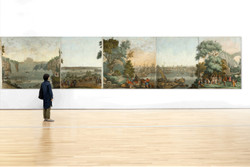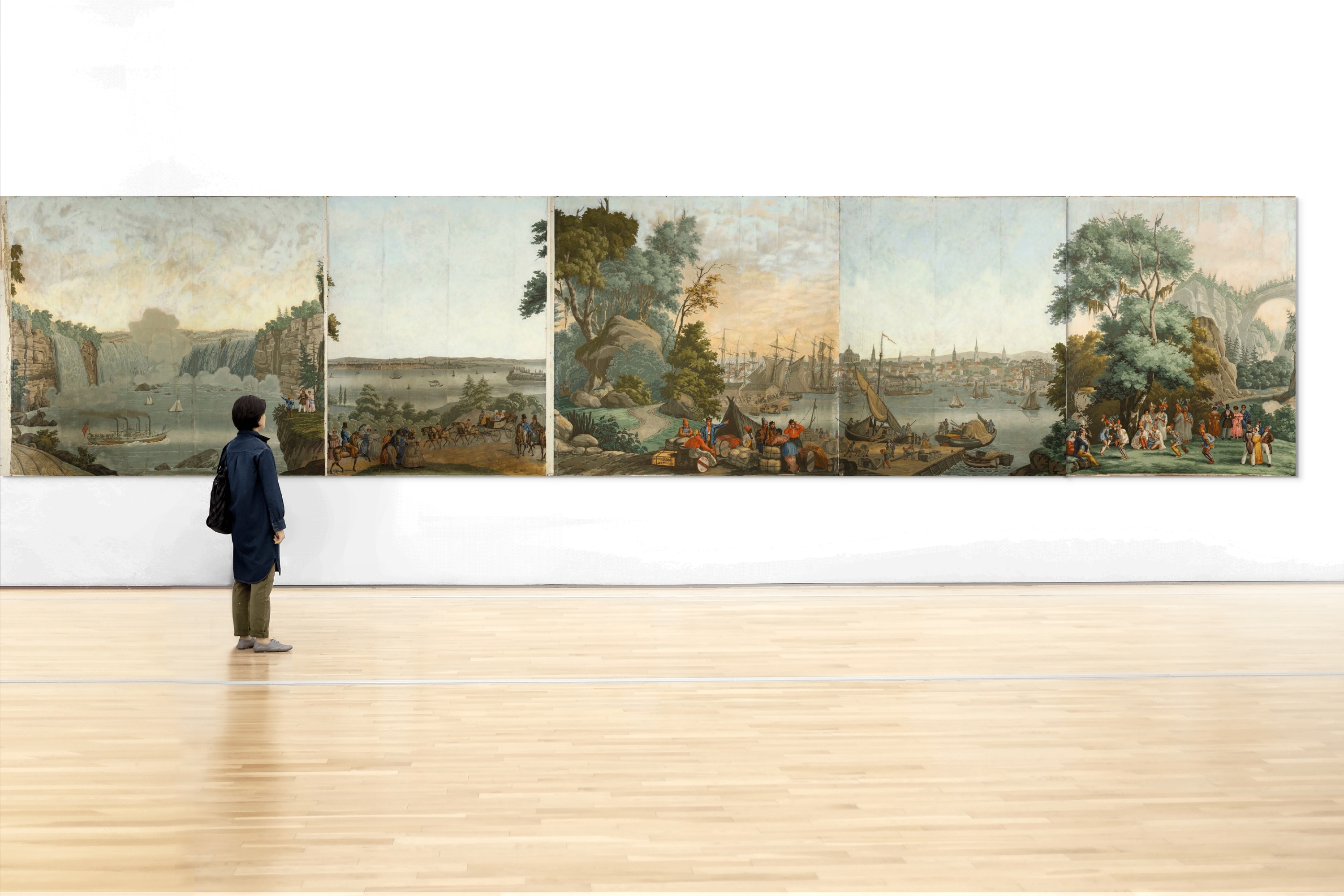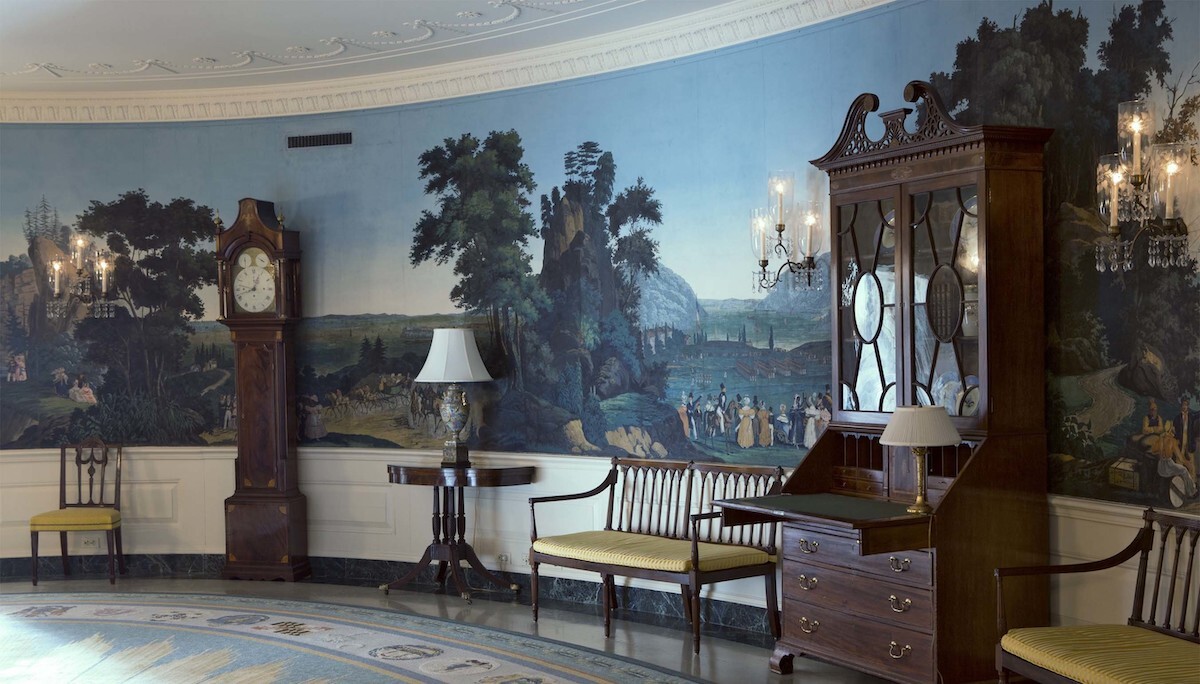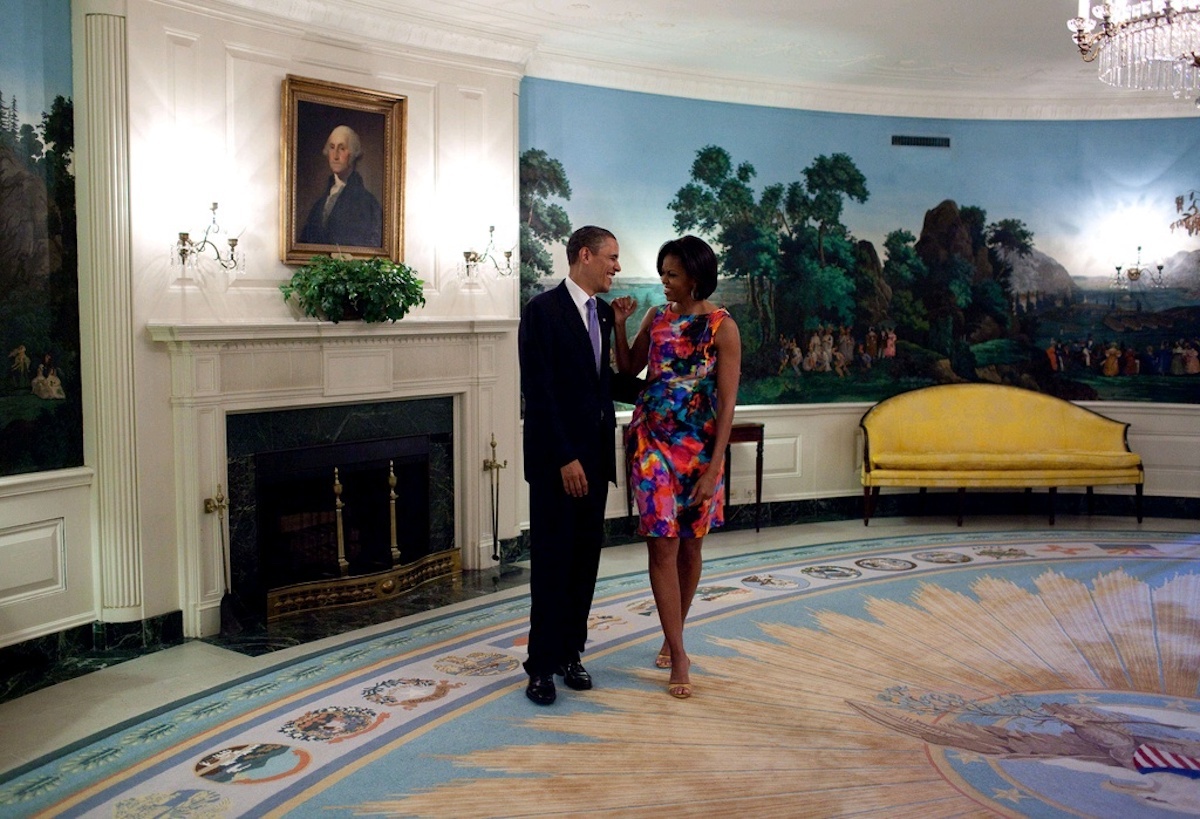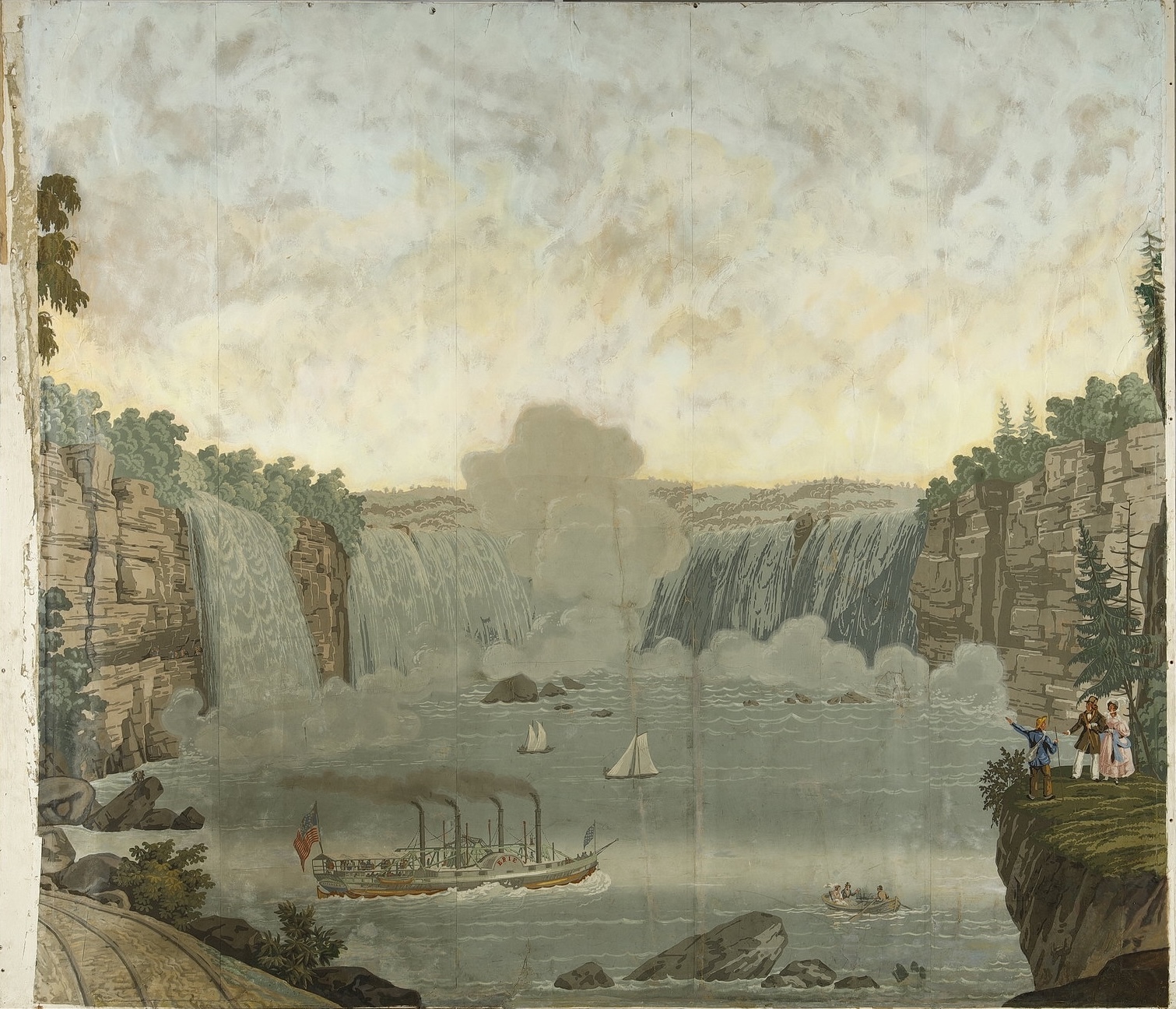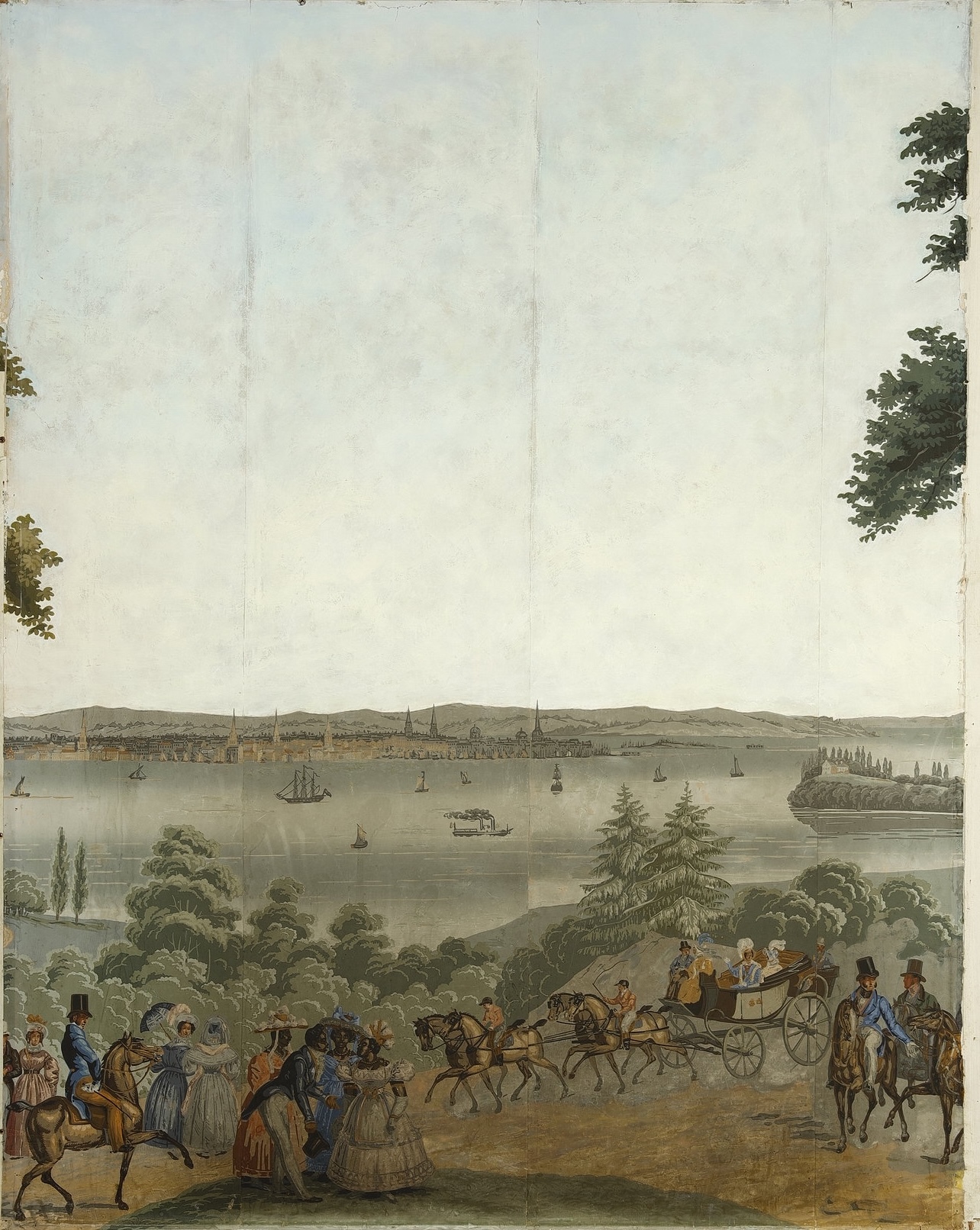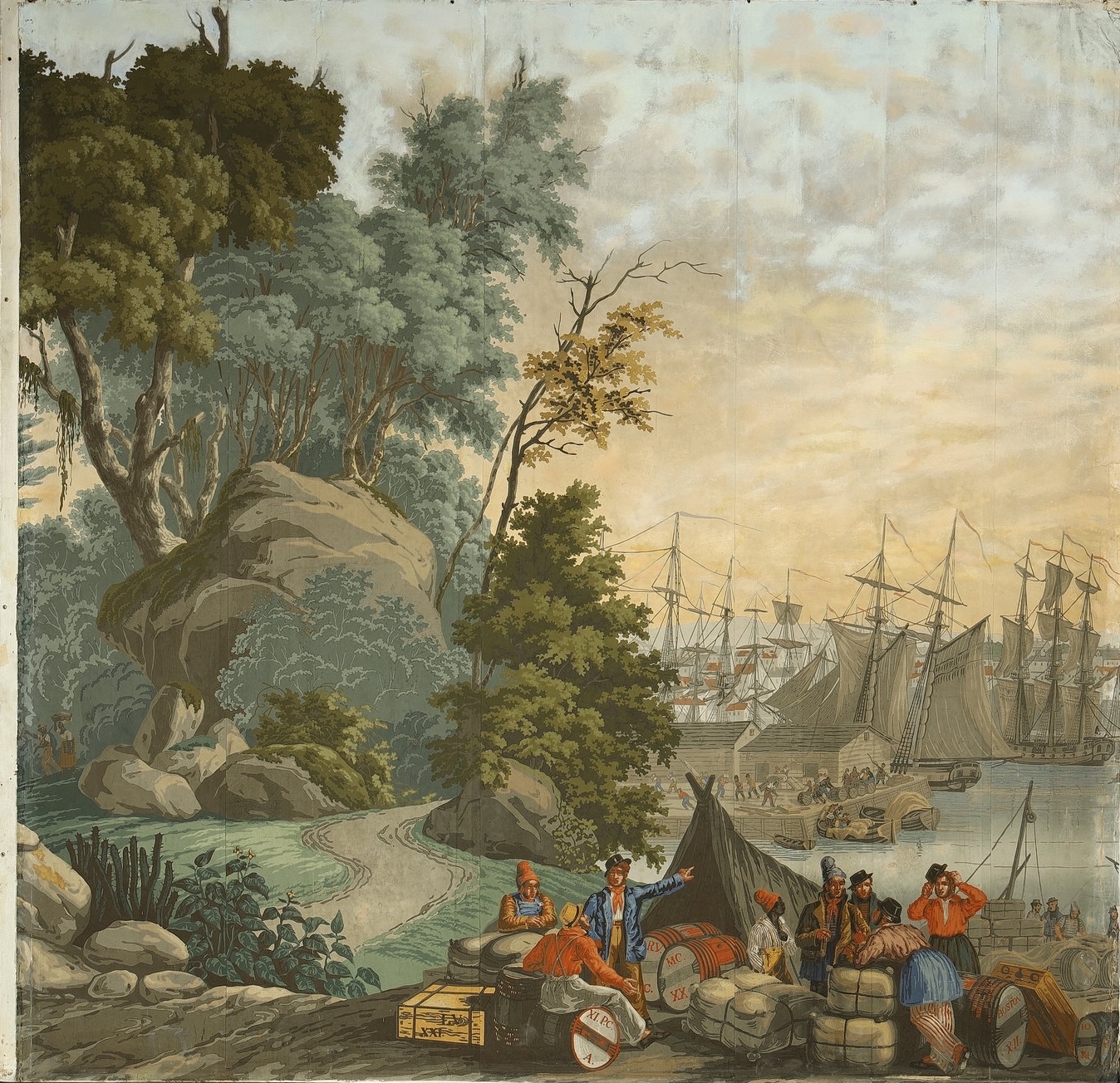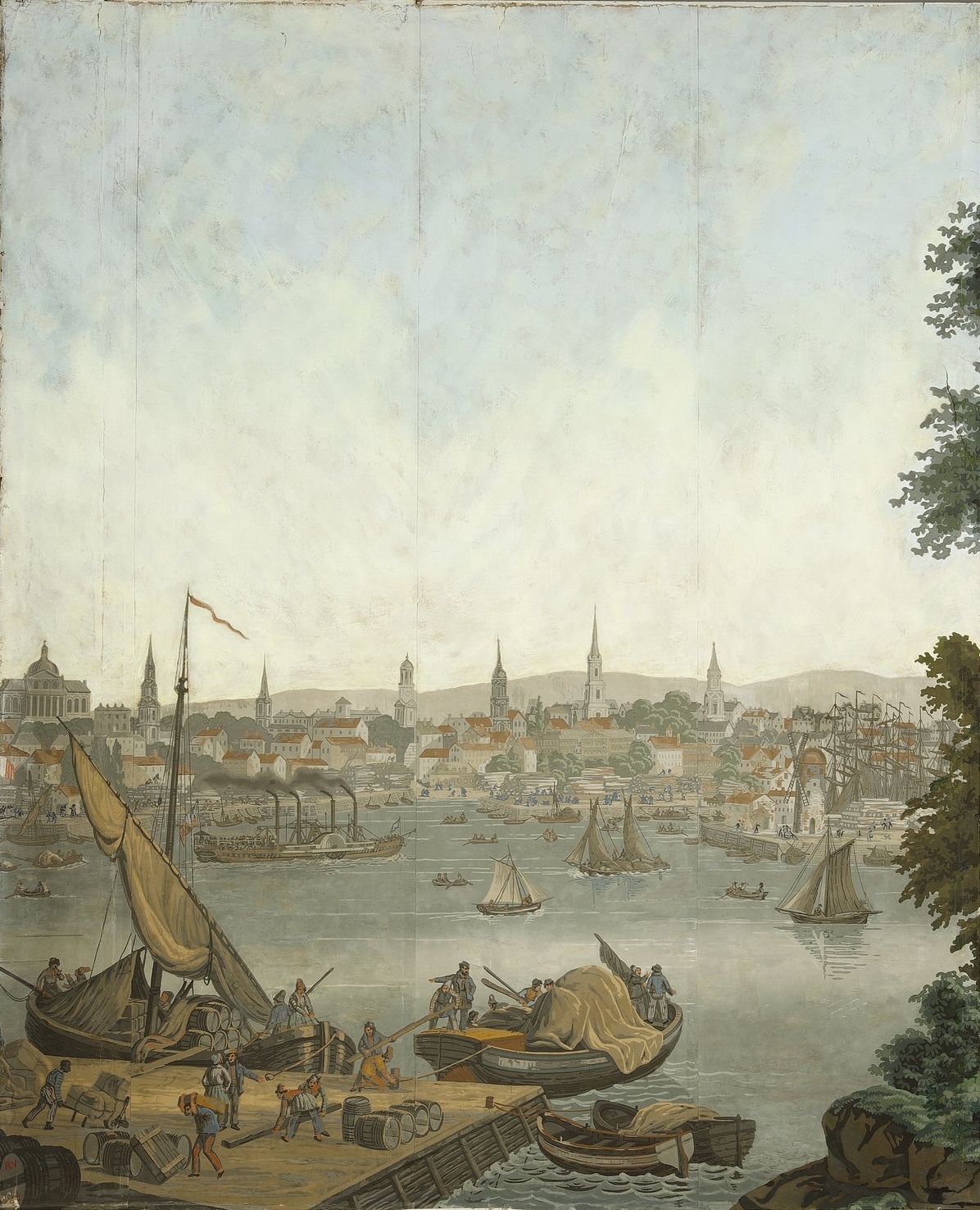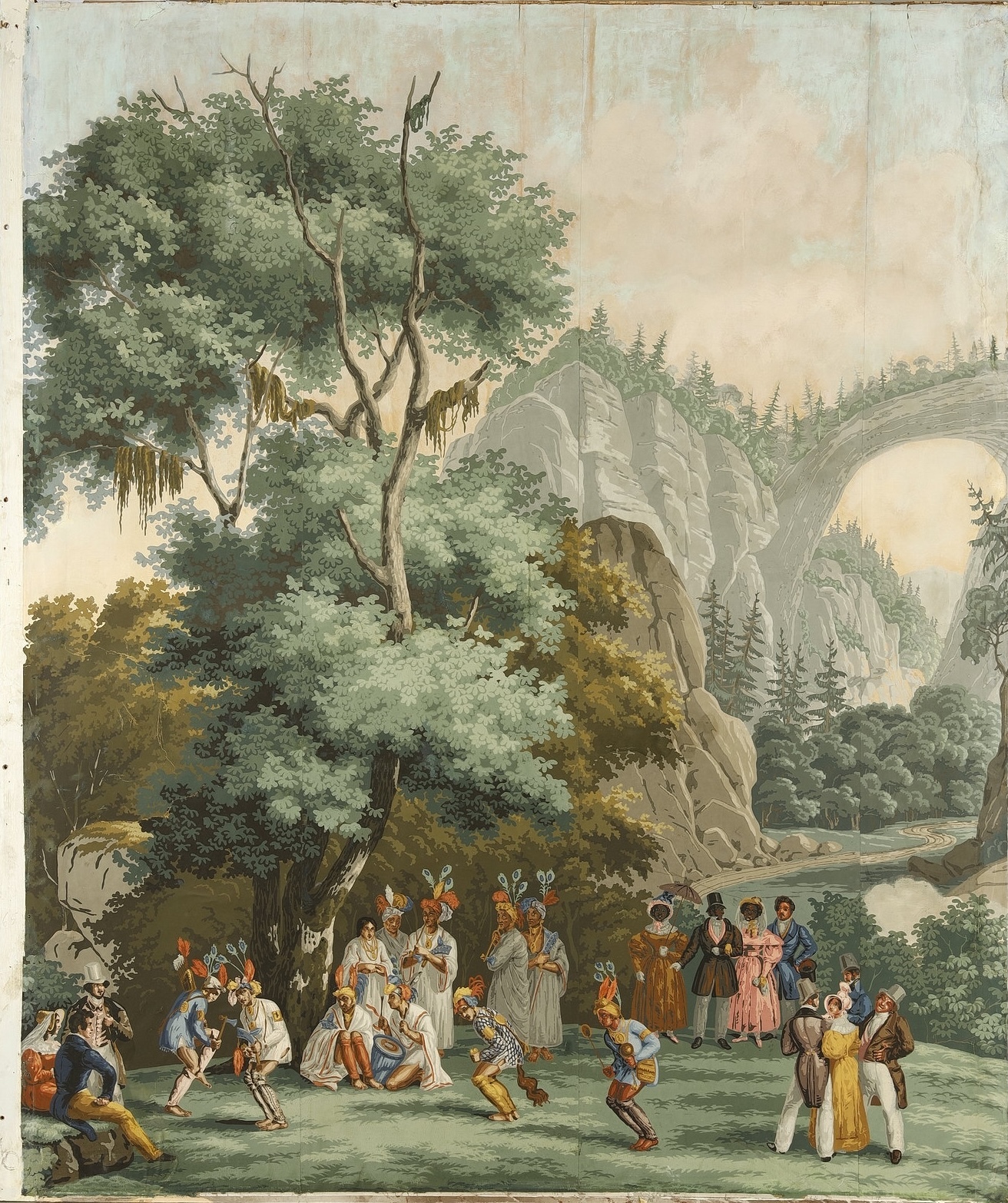Wallpaper panorama by Zuber & Cie: a look at America in the XIXᵉ century - EUR 25,000
08.07.25
In the history of interior design, there are few works as spectacular and refined as the panoramic wallpapers produced by Zuber & Cie. These monumental decors, the fruit of unique French craftsmanship, have left their mark on the walls of the most elegant homes in Europe and America, taking viewers' eyes and imaginations to faraway lands.
Zuber & Cie, an exceptional manufactory
Founded in 1797 in Rixheim, Alsace, the Zuber & Cie factory is one of the last remaining panoramic wallpaper workshops in the world. From the outset, Zuber specialized in engraved woodblock printing, a technique in which each color of a decor requires a separate, hand-crafted woodblock - up to 1600 separate woodblocks for a series like "North American Views". Once printed, the wallpapers are then hand-painted to enhance color, background and detail. This process lends unparalleled depth, nuance and richness to their wallpapers, which become true works of art.
The Zuber factory is the only one in the world to have maintained the tradition of block printing for the creation of panoramic decors. The factory's archives hold some 130,000 documents, testifying to the richness and diversity of its creations over more than two centuries.
One of the Manufacture's best-known series is entitled "Vues d'Amérique du Nord", and we're going to find out all about it in this article...
"Views from North America"the American dream as seen from Europe
Created in 1834 by the painter Jean-Julien Deltil (1791-1863), the "Vues d'Amérique du Nord" series embodies the admiration and curiosity that Romantic Europe held for the New World at the time. Comprising 32 strips*, this panoramic fresco takes the viewer from New York Bay to the picturesque shores of Niagara, via Boston, Virginia and the banks of the Mississippi.
We discover bustling ports, such as New York or Boston, where steamboats, sailboats and horse-drawn carriages testify to commercial vitality; grandiose landscapes, forests, plains or waterfalls, sublimated by soft light; scenes of life mixing settlers, Amerindians, slaves and travelers, reflecting the tensions and diversity of America in the first half of the XIXᵉ century. A true historical document, this series combines exoticism, precise observation and graphic poetry.
This panoramic décor gained international renown, not least when it was installed in the Diplomatic Reception Room of the White House at the instigation of Jacqueline Kennedy in the 1960s. This room, originally a boiler room, was transformed into a reception room for diplomats, and the choice of this wallpaper was intended to reflect the historical and cultural importance of the place.
Our collection includes 5 wallpapers laminated on wooden panels from the "North American Views" series, representing 5 of the 7 decors (23 of the 32 strips) in the overall fresco:
The first panoramic panel depicts Niagara Falls. The scene opens with a spectacular view of the falls, flooded with light. The view embraces both the grandeur of the forest-capped cliffs and the torrential force of the cascading waterfalls. The composition, with its remarkable pictorial balance, highlights the majesty of the site, delicately underlined by a sky of iridescent light, typical of Zuber's hand-painted landscapes. The foreground on the right enlivens the scene with figures in 19th-century costume, an American family attending the show, while on the left, a winding path runs along the rugged shoreline, adding narrative depth. America's pioneering dimension is underscored in the center by steamboats and several sailing ships, testifying to the rise of technical progress and the opening up of the continent.
One of Zuber's Niagara Falls wallpapers is now in the Musée du Louvre: find out more.
The scene depicted here shows New York Bay, the heart of economic and urban life at the time, the point of entry and exit to the "New World". Groups of elegant European and American figures, dressed as they were around 1830-40, stroll and chat, illustrating both the idea of the social promenade and the elite's discovery of the New World. A horse-drawn carriage carries travelers, while other riders and strollers enliven the scene in a spirit of curiosity and sociability. The panorama opens onto a spectacular view of New York Bay, bustling with sailboats and steamships, symbols of a dynamic port open to the Atlantic and the world. In the background, the skyline suggests the extent of the city, its first major buildings, its bell towers... The hills and pine trees in the foreground are a reminder of the omnipresence of nature on the outskirts of the booming city.
The third panel depicts a Boston harbor scene typical of the first decades of the 19th century in North America. In the foreground, a group of figures dressed in period costumes load and watch over bales, barrels and crates on the shore. In the background, numerous sailing ships, at anchor or unloading/shipping, stand out against the pastel sky, suggesting the vitality of American maritime trade. To the left, tall trees painted in a greenish-blue palette contrast the calm power of nature with the bustle of the port.
The scene depicts the bustling port activity of Boston Harbor. Workers and sailors are busy loading and unloading barrels and goods. In the bustling bay, several sailboats, barques and steamers pass each other on the lively water, illustrating the city's commercial dynamism. The last shot shows a panorama of the city of Boston, structured by a profusion of red roofs and public and religious buildings, from which many steeples emerge.
This fifth panel depicts a meeting between North American natives and European figures, against a backdrop of imposing landscapes. In the center, a group of Amerindians adorned in traditional costumes - feathers, moccasins, colorful tunics - participate in a ritual dance, while others in the background appear to be observing or waiting. On either side, several groups elegantly dressed in 19th-century European fashion (frock coats, full dresses, parasols) observe the scene. In the background, a sumptuous landscape of tall trees, a spectacular rocky massif, wooded mountains and a meandering river. The monumental arch appears to represent Virginia's famous "Natural Bridge", a geological curiosity frequently reproduced in romantic panoramas of the period: a symbol of the grandeur and mystery of North American nature.
Conclusion
Classified as "historic monuments", Zuber's woodcuts are still used today to hand-print these panoramas. Zuber wallpapers continue to appeal to collectors, decorators and history buffs alike, finding a new lease of life in contemporary interiors, museums and prestigious hotels.
The"Vues d'Amérique du Nord" series is a testament to Zuber & Cie's decorative genius, and to the ability of panoramic wallpaper to tell stories and transport the occupants of a room to faraway worlds. Heirs to a centuries-old tradition, these decors remain invitations to travel, to escape and to contemplate.
*A strip is the width of wallpaper between 2 selvedges.
Sources:
- https://escapadeur.eu/histoire/papier-peint-zuber-maison-blanche/?utm_source=openai
- https://www.zuber.fr/fr/historique-zuber?utm_source=openai
- https://collections.louvre.fr/ark%3A/53355/cl010101777?utm_source=openai

